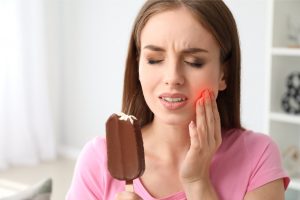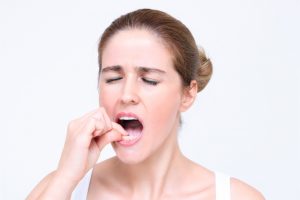Having a beautiful smile helps boost our self-confidence, but some of us who experience tooth sensitivity after teeth whitening tend to doubt the entire process. Most of the time, we repeatedly want to ask this question: ‘Is teeth whitening safe?’
Is it Safe?
Teeth whitening is clearly safe since the scientific dental community has long been researching on this. Whitening treatments in most countries are also regulated by governing bodies to ensure compliance and safety. It is a practice by the medical industry to ensure that this type of procedure is administered only by trained and qualified professionals.
Why Experience Sensitivity in Teeth Whitening?
Sensitivity in teeth whitening is when you experience pain or discomfort during whitening treatments. This kind of discomfort does not cause permanent damage to your teeth. The side effects do not typically last that long. However, if you notice that your teeth have remained sensitive for such a long time, you will need to consult your dentist.
Despite this, achieving a perfect set of pearly whites doesn’t have to cause too much pain. Let’s take a look at the causes of teeth whitening sensitivity, so we could find ways to reduce, if not remove, the symptoms.
Main Cause of Sensitivity After Teeth Whitening
 Hydrogen peroxide is the most common and popular ingredient among over-the-counter whitening products. Sadly, several people are sensitive to this substance. If you are one of them, you feel pain during a whitening procedure. Then you will feel discomfort once you eat or drink any hot or cold food product. The good news, however, is that the side effects of teeth whitening treatments are just temporary.
Hydrogen peroxide is the most common and popular ingredient among over-the-counter whitening products. Sadly, several people are sensitive to this substance. If you are one of them, you feel pain during a whitening procedure. Then you will feel discomfort once you eat or drink any hot or cold food product. The good news, however, is that the side effects of teeth whitening treatments are just temporary.
Teeth have tiny pores that are not commonly seen by the naked eye. Your teeth become sensitive when the pores are open. It becomes a bit more complicated once whitening products get into these pores. It’s going to be harder to deal with if you expose your teeth to extremely hot and cold temperatures.
During teeth whitening treatments, hydrogen peroxide gets into the pores and breaks up stains underneath your teeth’s surface. The bleaching process itself opens the pores, allows air and heat to enter into the sensitive parts of the tooth, which makes it more painful.
Other Causes of Sensitivity
As previously mentioned, dental professionals use hydrogen peroxide in most whitening treatments. It also exists in most bleaching or whitening kits. We need to know the factors that cause an impact on the level of our teeth’s sensitivity. Here are some of them:
Extreme Temperatures
Extremely hot or extremely cold drinks cause painful sensitivity. It is best to consume food that is neither too hot nor cold to ease up the pain of teeth whitening sensitivity.
Products with High Peroxide Levels and Prolonged Application
Do you know that even the products that contain the least amount of peroxide may still cause sensitivity to some people? Thus, if you wish to have your sensitive teeth whitened, it is still best to stick to products with very lower peroxide levels. An amount of five to six percent will do.
Another effective method is to apply a less intense concentration of the bleaching gel. The dentist applies a weaker level of the gel, which will remain on the teeth for a longer duration. This is opposed to applying the strongest bleaching gel and wearing it for one hour. This method helps in achieving the desired results without having to bear intolerable pain.
You can check out this post about the best teeth whitening toothpastes if you’re looking to purchase one.
Not Talking to Your Dentist About Your Sensitive Teeth
One of the best practices is speaking with your dentist about the available options for you before you undergo a tooth whitening treatment. This good habit allows you to make the best decisions depending on the level of teeth sensitivity that you have.
Your dentist will give you the best recommendations based on your needs. He or she may recommend a solution or even a product with a mild formula but can still effectively whiten your teeth. In-office treatments are also highly suggested and will always be on top of the list.
Depending on specific needs, in-office whitening treatments vary for each patient. Rest assured that treatments can be possibly and easily done, even for those who have the most sensitive set of teeth.
Tooth Dehydration
Here goes a more scientific explanation. Upon applying whitening gel on your teeth, the gel undergoes a natural process. It becomes inactive. Then, the pores in the tooth (tubules) will open. This will cause your teeth to be exposed, resulting in tooth dehydration.
As dehydration occurs, the dentin or the inner layer of the tooth shrinks inward. This incident applies pressure to the tooth nerve, which in turn causes discomfort. Your tooth will then remain sensitive unless it is re-hydrated. Rehydration happens as saliva is produced within several hours. For patients who have dry mouth or low saliva flow, though, it may take up to 48 hours for their teeth to be fully re-hydrated.
Pola Whitening Gel for Sensitive Teeth
One substance used for teeth whitening is the topical high concentration fluoride gel. The dentist places this gel into custom teeth trays that the patient will after the procedure. This is to hinder pain to be felt post-treatment. It works as fluoride blocks the pores, preventing the patient from having that shooting type of feeling.
Another type is the Pola whitening gel. Dental professionals formulated this to effectively remove not just surface tooth stains but also intrinsic stains brought about by enamel erosion. Dentists use this whitening gel as part of a whitening system that restores or repairs the tooth’s enamel. This type of gel can reduce teeth whitening sensitivity as it is also pH neutral. This gel being neutral means that pH balance in your mouth is maintained, thus, protecting each tooth and soft tissue from damage and irritation.
After the Teeth Whitening Treatment
Within a week or two after a tooth whitening treatment, avoid types of food and drink that can easily stain the teeth. Foods that contain too much color are red wine, coffee, soda, candy, chocolate, among others. During this period, the pores of the tooth are still open, causing your teeth to be read ily stained.
ily stained.
If you want to keep your white smile, it’s best to minimize the intake of food that has a high level of sugar or acid. Examples of food with high sugar level are honey, ketchup, peanut butter, evaporated milk, lima beans, among others. Foods with high acid content include green peas, processed meat (hotdog, sausage, ham, etc.), yogurt, milk, cupcake (yes!), French fries, and cookies. Both acid and sugar increase the risk of tooth decay.
This suggestion is challenging for some, but it is good to avoid or quit smoking or chewing tobacco. Dentists also recommend brushing twice each day with a toothbrush that has soft bristles plus rinsing with mouthwash once a day. Last but not least, visiting the dentist for regular check-ups will always be a priority.
If you’re looking for home kits, check out this review of the best teeth whitening kits in the market today for more info.




